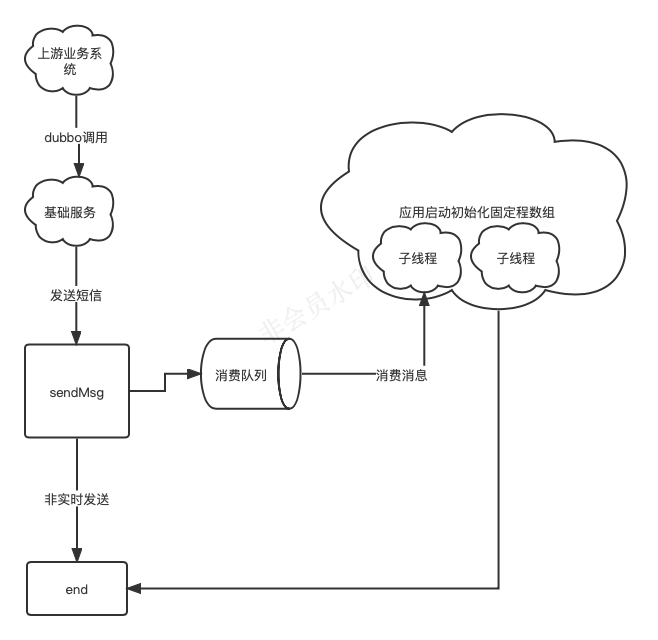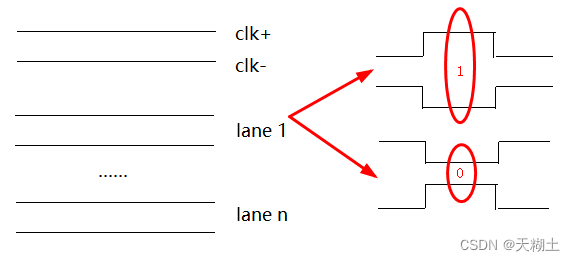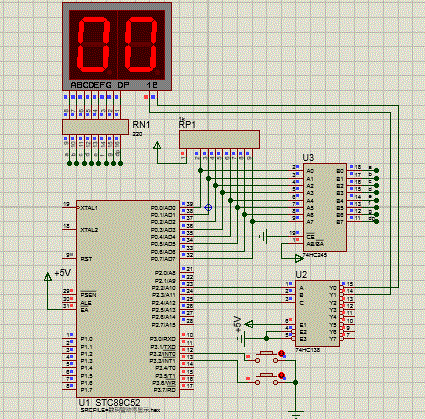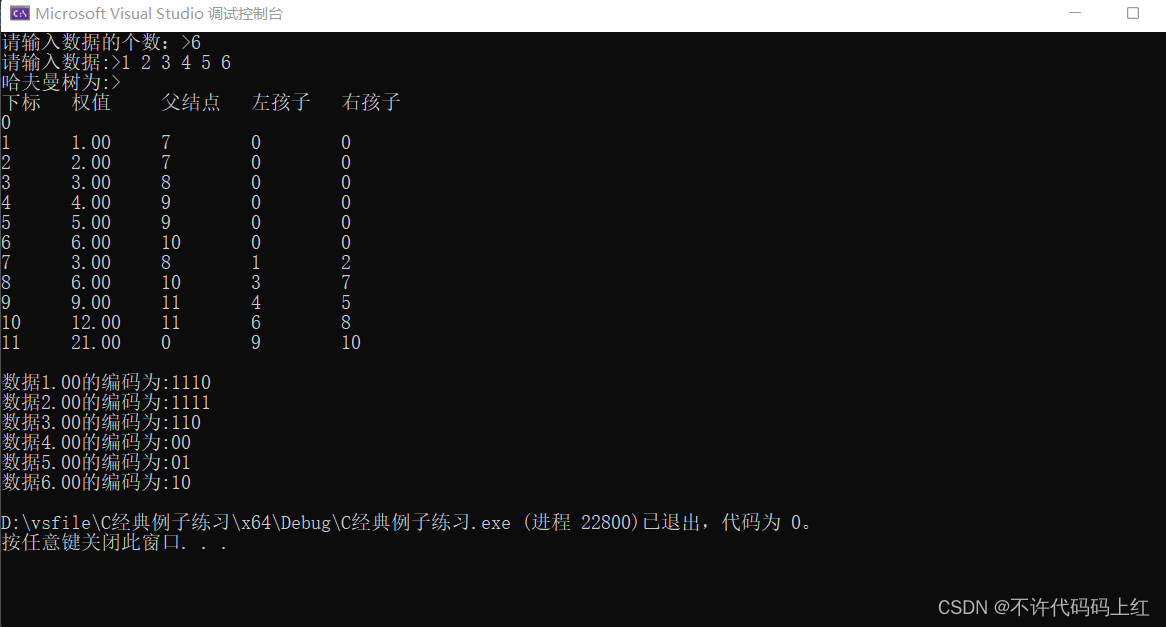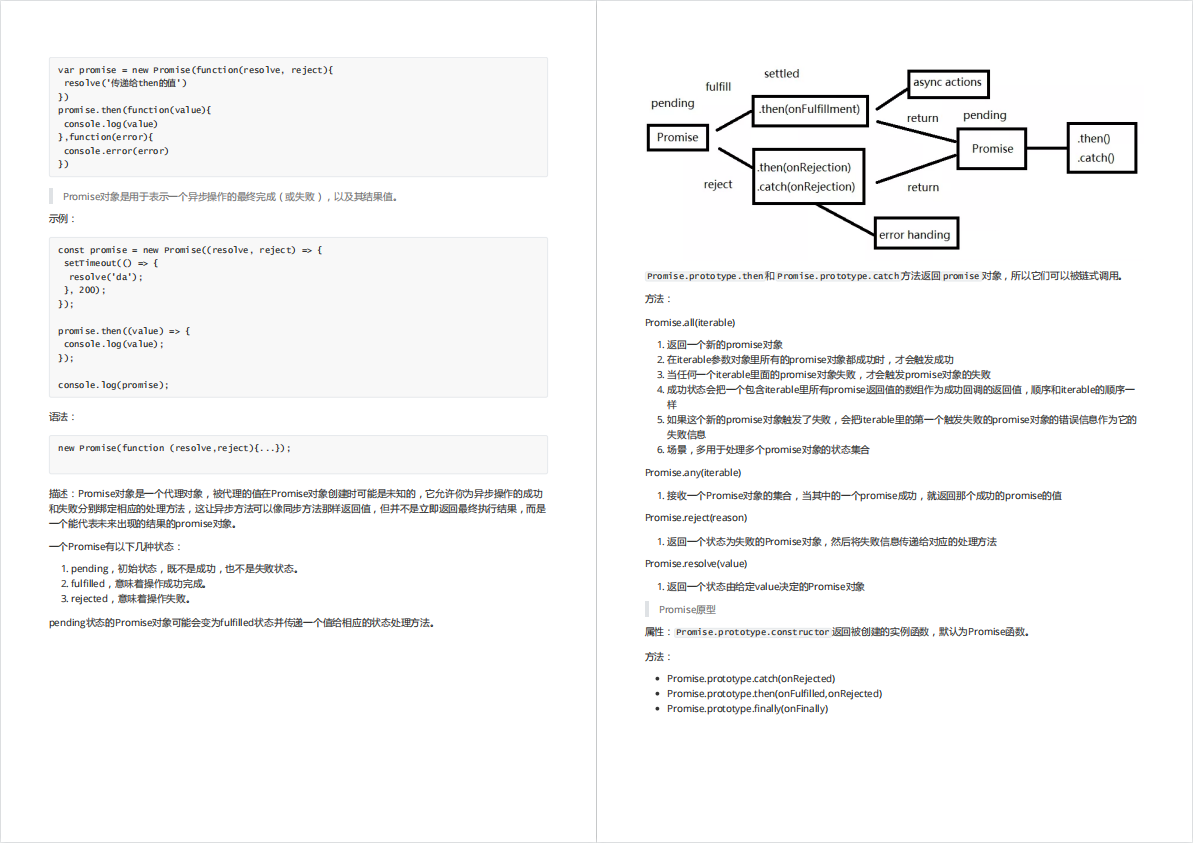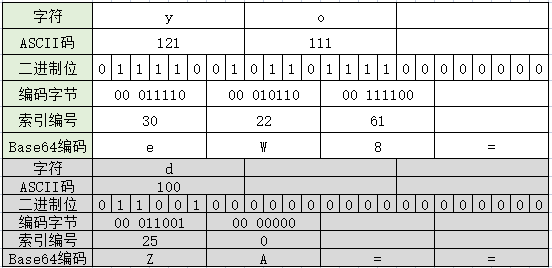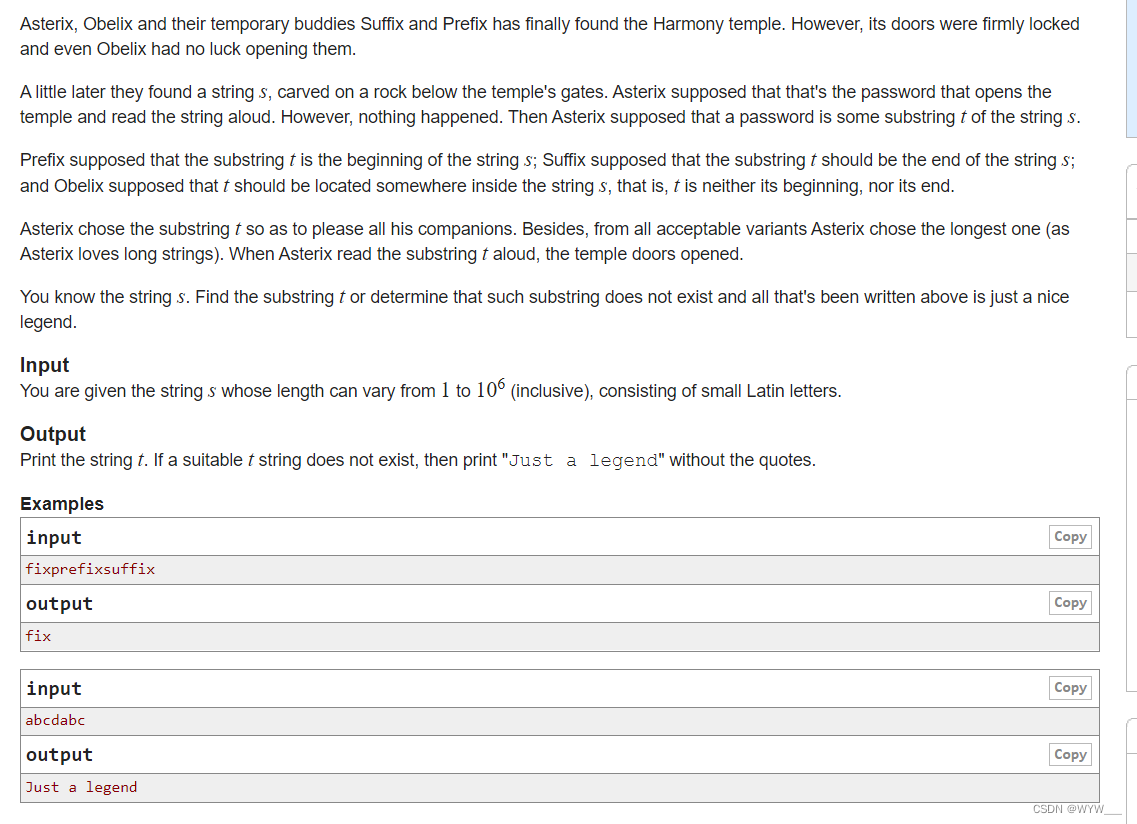首先,在计算机科学中 routine 被定义为一系列的操作,多个 routine 的执行形成一个父子关系,并且子 routine 一定会在父 routine 结束前结束,也就是一个个的函数执行和嵌套执行形成了父子关系。
coroutine 也是广义上的 routine,不同的是 coroutine 能够通过一些操作保持执行状态,显式地挂起和恢复,相对于 routine 的单控制流,coroutine 能提供一个加强版的控制流。
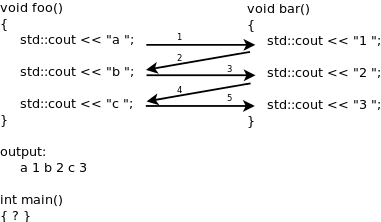
协程执行转移
如图中的处理流程,多个 coroutine 通过一些机制,首先执行 routine foo 上的 std::cout << "a" 然后切换到 routine bar 上执行 std::cout << "b",再切换回 routine foo 直到两个 routine 都执行完成。
coroutine 如何运行?
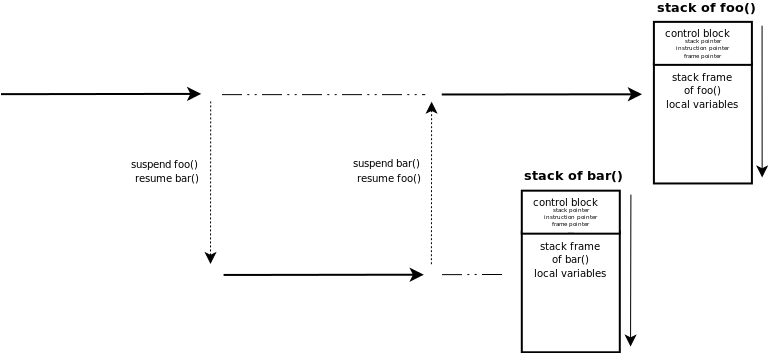
通常每个 corotuine 都有自己的 stack 和 control-block,类似于线程有自己的线程栈和control-block,当协程触发切换的时候,当前 coroutine 所有的非易失(non-volatile)寄存器都会存储到 control-block 中,新的 coroutine 需要从自己相关联的 control-block 中恢复。
协程的分类
A. 根据协程的执行转移机制可以分为非对称协程和对程协程:
- 非对称协程能知道其调用方,调用一些方法能让出当前的控制回到调用方手上。
- 对程协程都是平等的,一个对程协程能把控制让给任意一个协程,因此,当对称协程让出控制的时候,必须指定被让出的协程是哪一个。
B. 根据运行时协程栈的分配方式又能分为有栈协程和无栈协程:
通常情况下,有栈协程比无栈协程的功能更加强大,但是无栈协程有更高的效率,除此之外还有下面这些区别:
有栈协程能够在嵌套的栈帧中挂起并且在之前嵌套的挂起点恢复,而无栈协程只有最外层的 coroutine 才能够挂起,由顶层 routine 调用的 sub-routine 是不能够被挂起的。
有栈协程通常需要分配一个确定且固定的内存用来适配 runtime-stack,上下文的切换的时候相比于无栈协程也更加消耗资源,比如无栈协程仅仅只需要存储一个程序计数器(EIP)。有栈协程在语言(编译器)的支持下,有栈协程能够利用编译期计算得到非递归协程栈的最大大小,因此,内存的使用方面能够有所优化。无栈协程,不是代表没有运行时的栈,无栈只是代表着无栈协程所使用的栈是当前所在上下文的栈(比如一个函数 ESP~EBP 的区间内),所以能够正常调用递归函数。相反,有栈协程调用递归函数的时候,所使用的栈是该协程所申请的栈。
分三个方面来总结的话就是:
-
内存资源使用:无栈协程借助函数的栈帧来存储一些寄存器状态,可以调用递归函数。而有栈协程会要申请一个内存栈用来存储寄存器信息,调用递归函数可能会爆栈。
-
速度:无栈协程的上下文比较少,所以能够进行更快的用户态上下文切换。
-
功能性:有栈协程能够在嵌套的协程中进行挂起/恢复,而无栈协程只能对顶层的协程进行挂起,被调用方是不能挂起的。
Boost.Coroutine
C++ Boost 库在 2009 年就提供了一个子库叫做 Boost.Coroutine 实现了有栈协程,且实现了对称(symmetric)和非对程(symmetric)协程。
1. 非对程协程(Asymmetric coroutine)
非对程协程提供了 asymmetric_coroutine<T>::push_type 和 asymmetric_coroutine<T>::pull_type 两种类型用于处理协程的协作。由命名可以理解,非对程协程像是创建了一个管道,通过push_type写入数据,通过pull_type拉取数据。
协程例子 A
boost::coroutines::asymmetric_coroutine<int>::pull_type source(
[&](boost::coroutines::asymmetric_coroutine<int>::push_type& sink){
int first=1,second=1;
sink(first);
sink(second);
for(int i=0;i<8;++i){
int third=first+second;
first=second;
second=third;
sink(third);
}
});
for(auto i : source)
std::cout << i << " ";
output:
1 1 2 3 5 8 13 21 34 55
上面的例子是协程实现的斐波那契数列计算,在上面的例子中,push_type 的实例构造时接受了一个函数作为构造函数入参,而这个函数就是 协程函数(coroutine function),coroutine 在 pull_type 创建的上下文下运行。
该协程函数的入参是一个以 push_type&,当实例化外层上下文中 pull_type 的时候,Boost 库会自动合成一个 push_type传递给协程函数使用,每当调用 asymmetric_coroutine<>::push_type::operator() 的时候,协程会重新把控制权交还给push_type所在的上下文。其中asymmetric_coroutine<T> 的模板参数 T 定义了协程协作时使用的数据类型。
由于 pull_type 提供了input iterator,重载了 std::begin和std::end所以能够用 range-based for 循环方式来输出结果。
另外要注意的是,当第一次实例化pull_type的时候,控制权就会转移到协程上,执行协程函数,就好比要拉取(pull)数据需要有数据先写入(push)。
协程例子 B
struct FinalEOL{
~FinalEOL(){
std::cout << std::endl;
}
};
const int num=5, width=15;
boost::coroutines::asymmetric_coroutine<std::string>::push_type writer(
[&](boost::coroutines::asymmetric_coroutine<std::string>::pull_type& in){
// finish the last line when we leave by whatever means
FinalEOL eol;
// pull values from upstream, lay them out 'num' to a line
for (;;){
for(int i=0;i<num;++i){
// when we exhaust the input, stop
if(!in) return;
std::cout << std::setw(width) << in.get();
// now that we've handled this item, advance to next
in();
}
// after 'num' items, line break
std::cout << std::endl;
}
});
std::vector<std::string> words{
"peas", "porridge", "hot", "peas",
"porridge", "cold", "peas", "porridge",
"in", "the", "pot", "nine",
"days", "old" };
std::copy(boost::begin(words),boost::end(words),boost::begin(writer));
output:
peas porridge hot peas porridge
cold peas porridge in the
pot nine days old
接下来的这个例子主要说明了控制的反转,通过在主上下文中实例化的类型是push_type,逐个传递一系列字符串给到协程函数完成格式化输出,其构造函数是以pull_type&作为入参的匿名函数,在实例化push_type的过程中,库仍然会合成一个pull_type传递给该匿名函数,也就是协程函数。
与实例化pull_type不同,在主上下文中实例化push_type并不会直接进入到协程函数中,而是需要调用push_type::operator() 才能切换到协程上。
asymmetric_coroutine<T> 的模板参数 T 的类型不是 void 的时候,在协程函数中,可以通过pull_type::get()来获取数据,并通过pull_type::bool()判断协程传递的数据是否合法。
协程函数会以一个简单的return语句回到调用方的routine上,此时pull_type和push_type都会变成完成状态,也就是pull_type::operator bool()和push_type::operator bool() 都会变成 false;
协程的异常处理
coroutine函数内的代码不能阻止 unwind 的异常,不然会 stack-unwinding失败。
stack unwinding 通常和异常处理一起讨论,当异常抛出的时候,执行权限会立即向上传递直到任意一层 catch 住抛出的异常,而在向上传递前,需要适当地回收、析构本地自动变量,如果一个自动变量在异常抛出的时候被合适地被释放了就可以称为"unwound"了。
stackoverflow: what is stack unwinding?
try {
// code that might throw
} catch(const boost::coroutines::detail::forced_unwind&) {
throw;
} catch(...) {
// possibly not re-throw pending exception
}
在 coroutine 内部捕获到了 detail::forced_unwind 异常时要继续抛出异常,否则会 stack-unwinding 失败,另外在 push_type 和 pull_type 的构造参数 attribute 也控制是是否需要 stack-unwinding。
2. 对称协程(Symmetric coroutine)
相对于非对称协程来说,对称协程能够转移执行控制给任意对称协程。
std::vector<int> merge(const std::vector<int>& a,const std::vector<int>& b)
{
std::vector<int> c;
std::size_t idx_a=0,idx_b=0;
boost::coroutines::symmetric_coroutine<void>::call_type* other_a=0,* other_b=0;
boost::coroutines::symmetric_coroutine<void>::call_type coro_a(
[&](boost::coroutines::symmetric_coroutine<void>::yield_type& yield) {
while(idx_a<a.size())
{
if(b[idx_b]<a[idx_a]) // test if element in array b is less than in array a
yield(*other_b); // yield to coroutine coro_b
c.push_back(a[idx_a++]); // add element to final array
}
// add remaining elements of array b
while ( idx_b < b.size())
c.push_back( b[idx_b++]);
});
boost::coroutines::symmetric_coroutine<void>::call_type coro_b(
[&](boost::coroutines::symmetric_coroutine<void>::yield_type& yield) {
while(idx_b<b.size())
{
if (a[idx_a]<b[idx_b]) // test if element in array a is less than in array b
yield(*other_a); // yield to coroutine coro_a
c.push_back(b[idx_b++]); // add element to final array
}
// add remaining elements of array a
while ( idx_a < a.size())
c.push_back( a[idx_a++]);
});
other_a = & coro_a;
other_b = & coro_b;
coro_a(); // enter coroutine-fn of coro_a
return c;
}
std::vector< int > a = {1,5,6,10};
std::vector< int > b = {2,4,7,8,9,13};
std::vector< int > c = merge(a,b);
print(a);
print(b);
print(c);
output:
a : 1 5 6 10
b : 2 4 7 8 9 13
c : 1 2 4 5 6 7 8 9 10 13
上面的例子是使用对称协程实现的一个有序数组的合并,对称协程提供了相类似的symmetric_coroutine<>::call_type 和 symmetric_coroutine<>::yield_type 两种类型用于对称协程的协作。call_type 在实例化的时候,需要接受一个以yield_type& 作为参数的(协程)函数进行构造,Boost库会自动合成一个yield_type作为实参进行传递,并且实例化 call_type 的时候,不会转移控制到协程函数上,而是在第一次调用call_type::operator()的时候才会进入到协程内。
yield_type::operator() 的调用需要提供两个参数,分别是需要转移控制的协程和需要传递的值,如果 symmetric_coroutine<T> 的模板参数类型是 void,那么不需要提供值,只是简单的转移控制。
在异常处理和退出方面,对称协程和非对称协程基本一致,非对程提供了一种多协程协作方案。
结语
虽然 Boost.Coroutine 库已经被标记为标记为已过时(deprecated)了,但是可以从历史的角度来理解协程的分类和基本工作原理,为现在多样化的协程探索拓宽道路。



